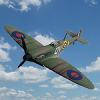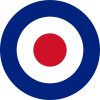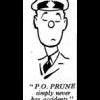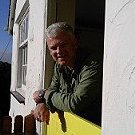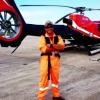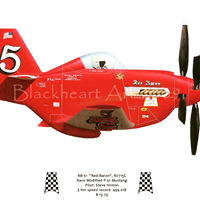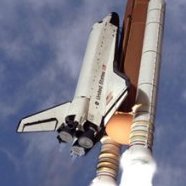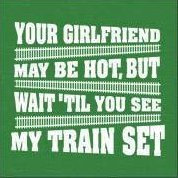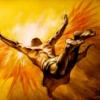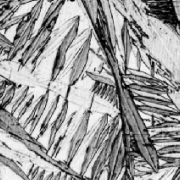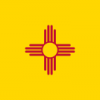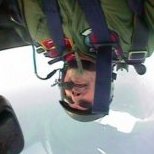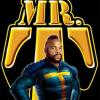Leaderboard
Popular Content
Showing content with the highest reputation on 13/05/19 in all areas
-
Welcome to the RFI for my very first helicopter. The Kamov 27 Helix by Hobby Boss. It’s a lovely kit with very little to correct. I used : Tamiya paints. (Acrylic) flory washes vallejo Paint (Acrylic) Tamiya weathering powder. ammo filters and EZ-line I scratch built the seat harnesses and some of the interior wiring. without further ado here she is. here’s an internal shot from the WIP. one last pic. Hope you like her. The WIP can be found here. If you followed along thanks for your help and companionship. My latest build is here. Take care kids and as always Happy Modelling. Johnny.27 points
-
The Academy kit in 1/48 is still a nice model and is a good cheaper alternative to the new Eduard model. It comes with several options for AAM's and unguided rocket pods, but no bombs. I pinched some FAB 250's from the Kitty Hawk Su 22. Decals for the nose came from Crosswind Hobbies and the find flash was painted. I was unsure if the aircraft carried any wing insignia, but as I didn't have any, I left these off. There is the chance the aircraft didn't carry them as it was most likely used in the Angolan Civil War, which the Cuban's had a hand in. Many of their MiGs were flown by Cuban pilots. C50 suffered a crash landing at some time during the conflict and was probably written off.23 points
-
To improve my skills I purchased this inexpensive Academy Hellcat kit. It is my first ever 1/72 scale kit and I was pleasantly surprised by the detail. I put my Spitfire builds on hold, and worked solely on the Hellcat, which has become my first completed build in over 15 years. I tested new paints, weathering pastels/enamels, decal solutions and glues. It was a great learning experience and I enjoyed every step of the way. Thanks to everyone here for answering my Hellcat specific questions. Feel free to comment (I am anticipating dings for too much weathering!). I will take it as constructive criticism. I have 4 more Hellcat models on standby and want to improve my skills. It is 'out of the box' and what I would call a 'what if', in the sense that I didn't try to copy any known existing Hellcat (as far as markings). One last note - I got very lucky with my photos. Up until last week my pictures were terrible, but somehow, moving my spray booth (which also serves as my light box) to another location corrected lighting issues and I am very pleased with the results. The bottom 4 pictures were taken with my new macro lens, and you can see some difference in the levels.21 points
-
Hi all, After having had a bit of a hiatus, this is my second posting within a few weeks so I can get on with it when I put my mind to it 😝 This time round, I chose a kit I've had in my stash for a while - the Italeri Hs 129. This is actually the first Italeri kit I've built and apart from the odd bits here and there that took more effort, the kit went together well and I think it has really good levels of detail for 1/72. I bought this kit because the Hs 129 has always intrigued me - purely because of it's shape - as it has an almost triangular fuselage which is very unusual. There was also a good choice of schemes to complete the kit in - a couple of Eastern front schemes, a Romanian version and then the one I chose which was Hs 129 B-2 - 4 (Pz.)/SG, Castel Benito, Libya 1942. I was drawn to the mottling for this scheme used to blend the aircraft into it's surroundings in the desert environments. I've never done any amount of mottling before so decided to bite the bullet and give it a go - hopefully I've done it justice So here goes - my Libyan tank buster - hope you like it and as always you're feedback and comments are greatly appreciated. Kris21 points
-
Hi all I have been working on this little gem of a kit. This is a lovely kit to put together and looks the part. Slightly simplified without some scoops etc on the top of the fuselage but very pleased with it. Built OOB apart from a small whip aerial on the lower port forward fuselage and the headlights were drilled out with a round burr and painted and filled with lazer bond glue. Brush painted with Humbrol enamels. Great Value for money Kit from Airfix Hope you like Thanks for looking All the best Chris20 points
-
Dear fellow Britmodellers, this is my 1/72 Tamiya Mosquito FB Mk.VI, built with Master metal gun barrels, CMK weapon bay and Eagle Cal decals. Markings represent an aircraft of 418. Squadron in October 1944. Painted with Gunze/Mr.Hobby acrylics. All photographs by Wolfgang Rabel. CMK weapon bay wasn't a good fit at all, being too short for the cut-out of the lower fuselage. Thanks for your interest in this topic. With best greetings from Vienna, Roman20 points
-
I finished this on Saturday having taken me 4 months. It’s a commission build for somebody leaving and it’s been made from the Italeri 1/48 212 kit. I work at MW so have popped into Hangar 3 when I needed to for reference. The colours are the Hataka range and are a very good match. The orange is the old orange as they changed spray painters and the current is very err orange, but this is what the guys wanted. It gets delivered tomorrow so I thought I’d get a couple of shots. The worst part of the kit is the front windscreen absolutely shocking fit. After all the effort I thought this would detract from the finished article, but perseverance paid off. A2CD482B-61DB-4430-AEDB-61196F61B3CE by Stephen Priestley-Dean, on Flickr FFBD5189-DB02-41F9-A7D1-29E6178FE649 by Stephen Priestley-Dean, on Flickr 5FE5B1D6-986F-48EE-A48A-54A7A8066B2C by Stephen Priestley-Dean, on Flickr 1EDEC436-B08D-445E-9EC9-ED52011FEE1F by Stephen Priestley-Dean, on Flickr D2D6369D-79B7-4916-A581-606DD3D0AA03 by Stephen Priestley-Dean, on Flickr Steve.17 points
-
Dear fellow Britmodellers, this is my 1/72 UM M12 155mm GMC 'King Kong', built from the box in markings of 991st FA Batallion, Germany 1944. Wires for the earth spade added. This little kit has around 250 parts (183 plastic and 62 photo-etch to be precise) and kept me busy for several months. Fit is problematic in places, and assembly challenging. I hope you like my result. Photos by Wolfgang Rabel. Thank you for your interest - best greetings from Vienna! Roman11 points
-
Dear fellow Britmodellers, here's my 1/72 Special Hobby P-40K in Russian markings. Built out of the box, painted with Gunze/Mr.Hobby acrylics. Photographs by Wolfgang Rabel. A full build review will appear in an upcoming edition of Scale Aviation Modeller International. With best greetings from Vienna, Roman11 points
-
This is my fourth completion of 2019, the venerable but still respectable (at least in the absence of much in the way of competition) Matchbox Heinkel He115B floatplane, wearing the markings from the later Revell reissue of the kit for an aircraft of the first staffel of Küstenfliegergruppe 506 based in Norway as part of Luftflotte 5 in 1941: I got the model quite cheaply off the well-known auction site and built it quickly (or as quickly as I could at least) partly as a trip down memory lane (which seems to have been redeveloped in the meantime as a cul-de-sac full of 4-bed Executive Homes) and partly just to try out the Luftwaffe Maritime colour scheme. It was built OOB with a couple of exceptions; the seated crew figures were replaced with Airfix pilots due to the loss of a leg on one of the original candidates, and the pitot tube was replaced with Albion Alloys micro-tubing so it looked less like the pitot salami provided in the kit. The R/T antenna wire was Infini White Rigging Thread, the 70 Denier size, anchored with a couple of tiny eyelets from Bob's Buckles which were intended for rigging 1/48 scale aircraft but have practical application in a less perverted scale as well I used the Eduard canopy mask set which is still available though the kit itself is, I believe, not currently in Revell's range. The paints used were Colourcoats ACLW12 RLM02 for the interior, ACLW03 RLM65 Hellblau for the underside and the uppersurface camouflage was ACLW04 RLM72 Grun and RLM05 RLM73 Grun. The Propellers and spinners were ACLW02 Schwarzgrun which is subtly different from the RLM73 but too subtly different for my camera to pick up, however I do want you to know that I made the effort The transfers were from the Revell re-issue of the kit which I had acquired at some distant point in the past, a remarkable act of foresight by Past Me. Generally they worked very well but the fuselage codes silvered quite badly, particularly on the port side, and no amount of Micro Sol completely eradicated this. So it goes. The final coat was Xtraflat varnish. Build thread is here. Thanks for your indulgence Cheers, Stew11 points
-
Dear fellow Britmodellers, here's my 1/72 Dragon Sherman M4A1 of 2nd Armored Division in France, 1944. Painted with Gunze acrylics, weathered with artist's oils. Photos by Wolfgang Rabel. Thanks for your interest in this topic. Best greetings from Vienna!9 points
-
Nakajima Ki-44-II Hei 1/48 Hasegawa. Marking: 3rd Chutai, 246th Sentai, Taisho airfield, Osaka area 1944 Colour: Gunze C, H and Tamiya acrylics Accessories: PE parts Eduard, resin kokpit parts S.B.S., decals Revi and wet transfers MYK Design Added: rivets Thank you for watching :-)9 points
-
Spitfire LF Mk.Vc Trop., JK345 336 (Greek) Sqn, RAF, Greece 1944. Airfix Mk.Vb with Alley Cat Mk.Vc conversion, markings from Xtradecal #48150, paint from Tamiya and Colourcoats9 points
-
Greetings folks, My latest build little Aldi cracker P51D Stang flown by Lt Eugene W James RAF Bodney, Norfolk, England 1944 Out of the box apart from the arial as original was a blob of plastic. Hairy stick job... The decals went on faultlessly pics though don't show how well they have gone into the panel lines. All comments welcome. Thanks for perusing..9 points
-
Hi, I start building Fujimi Fg.1 and Revell F-4F phantoms about a year ago, and the plan was trying to do a WIP of the build.. which you can see on the link I failed miserably. The build is heavily influenced by @giemme's amazing phantom builds. @Gene K intake are also use, and this build wouldn't be happening if without his help and of course his intake patterns.. I also received many helps from other BM members who provide me with info regarding the subjects... Thanks guys! Fujimi 1/72 F-4 Phantom II Fg.1 Revell 1/72 F-4F Phantom II The Phantom on the background is Hasegawa 1/72 RF-4E which I also finished after being the shelf queen since 2008ish... Partially detailed by Eduard F-4E PE set. My wife think I had enough Phantom.... Cheers, Mario9 points
-
Thanks @Troy Smith. I actually have that post from Gary C. bookmarked, and it's the process I usually use with Tamiya and Hasegawa decals. In this particular case, the problem wasn't adhering or conforming, it was silvering. I have a pretty good gloss Future coat, but for some reason I got quite a lot of silvering with the stencils (which were the only Tamiya transfers I used - the roundels and codes are from an EagleCals sheet, and I didn't get any silvering with those). I chose to use the Tamiya stencils because I thought they looked better, font-wise, and the small characters were more legible. In any event, I managed to poke enough tiny holes in the carrier film to allow Mr. & Mrs. Mark Softer to get underneath and soak up the trapped air. So I think we'll be OK at the end of the day. Now I'm debating whether to do a panel line wash. I've recently developed an opinion that in my normal scale of 1:72, I prefer not to do a panel line wash, or if I do, to make it very subtle. But this lady is a big puppy, and a panel line wash might be more applicable. I'll try a few spots in an inconspicuous spot and see how it goes. Cheers, Bill9 points
-
Saw this photo on line and thought it would make a nice dio. 88 is from zevezda and fig from Milcast8 points
-
Hello modellers. My last model is done. Modest model and some hard work in the fittings parts. An old traditional Hasegawa 1/72 model. I used Eduard photo etch interior and masks. Tamiya acrilic mixes. I choose JE+HK 2/KG.6 version, found in Melsbroek, Belgium1944. I hope you enjoy it. Cheers!8 points
-
8 points
-
Alright, after Simon beat me to building a Typhoon, I'd better get going with this I started painting the cockpit: after a coat of Vallejo Grey Primer thinned with Future, I airbrushed Tamiya XF1 Flat Black on the fuselage sidewalls and on the IP, tub, control stick and seat I then airbrushed Lifecolor Dark Gull Grey mixed with a bit of Light Gull Grey for scale effect, again on the tub and on the IP while the seat received a dark grey dry brush, to pick up details and facilitate the still to come detail painting Here's the tub after detail painting and a black tempera wash Ignore the bottom of the tub, it's going to be almost completely hidden by the seat. the same went for the IP - I tried to reproduce the screen glasses by brush painting Alclad Aqua Gloss on them The macro effect makes it look quite messy, but it's not that bad in real life. The aircraft I'm modelling is supposed to be almost pristine, so I did try to emphasize some features of the cockpit, rather than doing a propre weathering. I hope it will look OK, once everything is in place and buttoned up inside the fuselage. Comments welcome Ciao8 points
-
This was my project for the Patton Tank STGB. Information about the actual tank can be found on this page: http://www.tanks-encyclopedia.com/ww2/us/t26e4-super-pershing I haven't made an AFV with an engine compartment before so I decided, seeing as how HobbyBoss provided a reasonable looking version of the engine and transmision, that I would display my project with the engine compartment open. This resulted in a bit of a vignette which can be seen below. I tried a different style of base from my usual - thinking it might be quicker - but all those cobbles!! I dry-brushed them with a dark grey to start with but then had to pick out loads to give some variation. I was trying to get this project finished over the past weekend as the Panzer IV Tiger STGB starts next weekend. At some point in the future I will add something in the empty area in front of the tank - as it looks a little large and open - I blame the length of the gun!! The title for the Vignette - "How much longer?" - came from the idea of the Commander asking how long the engine repairs were going to take but I thought it also could apply to the length of the gun! Kit: HobbyBoss 1/35 T26E4 Super Pershing Pilot #1 Paints: Humbrol, Revell, Citadel and Railmatch - all applied by brush Extras: Tamiya Tank Crew, Italeri Tools, Slater's Plasticard, Academy ammo crate and jerrycan. WIP: Here RFI: Here And under it's plastic case: Well I had a great time building this. A big thank you to @Corsairfoxfouruncle for hosting the Patton STGB and to everyone who took the time to comment and make suggestions in my build thread. I'm still helping Dennis (I think) by co-hosting the GB but I'm also about to start a project in the the Panzer VI Tiger STGB. Kind regards, Stix7 points
-
So I really wanted a Flogger in my collection. The Academy kit was pretty much all I could get my hands on but, knowing the issues with fit and low level of detail, I was hesitant. Ended up biting the bullet after all and steeled myself to expect very little from the build. As expected, the cockpit detail was sparse (and that's being generous) so I stuck a pilot in there after having raised the seat to a more reasonable height, and closed up the canopy. The intakes on both sides of the fuselage had the most horrible fit; these needed large amounts of putty and coarse-grit sanding to shape and smooth the step/join. The main landing gear proved a tricky affair as well, being complex but poorly described in the instructions. I consider it a minor accomplishment achieving good alignment so the model sits evenly on its gear. Being a cheap kit I saw no point to putting in any aftermarket - so this is a completely OOB build. Please excuse the overall grey scheme, it is rather plain. Thanks for looking7 points
-
Continuing with the celebration of Apollo 11 50th anniversary. Monogram 1/48 Lunar Module with a few bits from the Dragon kit (re-boxed by Revell). Keith More here;7 points
-
Refinished in Argyl Blue lacquer, DuPont urethane clear coat. Engine wired and plumbed.7 points
-
7 points
-
My first 1/72 aircraft for 2019. It has been almost a year since my last successful 1/72 airplane build, and I was doubting I would be able to pull it off - especially after a thinner incident the occurred during touch up. Nevertheless, here it is. I'm happy with it, and I feel confident to return to my favorite aircraft scale. The model is straight from the box - including the harnesses, which are the Tamiya decals carefully cut out, painted black in back and then given a generous coat of the Ur-flatcoat, Testor's Dullcoat. Paints are Tamiya thinned with Mr. Leveling Thinner lacquer. I used artist's oil washes to create several filter coats, for weathering. I'm really pleased with the effect, and will continue to develop it in future builds. I'm really happy and excited about this model :)7 points
-
It is my last built: an Airfix Dornier Do17Z - 3U+FU Libya 1941. This kit has some difficulty and wrong panel lines. I adjusted some points and rivet all skin. I used Tamiya mixes. Cheers!7 points
-
Masks on. The masks were precise and relatively easy to apply. It was very difficult to "see" the individual masks against the background, though, making localizing the ones you needed a challenge:7 points
-
Well that was productive. 🥰 A lot done today, I’m pretty much done on the old Ford, I even got the Kamov Helix RFI done. 🧜♂️ But enough of that let’s get back to this beauty. I tried to fit the chassis in place once it was all dry. the front’s a doddle. The rear however. 🧟♂️ whaaaaaa? Well it gets to the point where you need to make a leap of faith. Basically you have to bend the rear section out quite a lot to eventually slide the rear end in. when it pops it’s actually a good fit. now glue! And pegs. it’s been a while since I used pegs. The engine bay looks fuller now too. 😀 There are a bunch of decals I need to add. started with the bonnet, there were a few inside the engine bay and a bunch around body work. The wheels had dried so with some extra help. I slipped ‘em into place. rear. front. All looking good and not a wobble in sight. 🙌 ta daaaaa. 🥳 Next of the last bits. Lights got washed last night so I could fit. The clear parts. 😁🤗 I don’t think I’ve used Gators grip so much in all my life. I started adding the wires I’d promised. looking busy. I’ll bend the wires when they’re dry. I glued the rear panel too. oh and knocked back under the bonnet. I only have the wing mirrors and licence plates left to do. so we’re here. looking just how I wanted. So close to finished it hurts. Next build might be a big un. But let’s get this out of the way first. Thanks for dropping by. Hope you all had a lovely weekend. Take care and as always, Happy Modelling. Johnny.7 points
-
What if? What if the Confederate States of America had survived the American Civil War? What if the CSA had survived right up into the present? Well, that's the premise behind this aircraft. I created a scenario in which today's CSA co-exists with the USA here in the 21st Century. For brevity's sake, I won't bore everyone with the whole story, but I envisioned CSAF squadrons that were named for Confederate war heroes. I imagined four Maritime Air Stations; Norfolk, Charleston, Tampa and Biloxi, Miss. These squadrons are named after famous cavalry commanders of the Civil War. This CSAF Mirage F-1 is assigned to the Nathan B. Forrest Squadron based at Biloxi. Their primary mission is anti-ship interdiction. My "what if" Confederacy requires imported aircraft due to an aircraft industry that still hasn't reached maturity, nor any sort of parity with their neighbor, the United States. I guess I might flesh out my what if scenario a bit. A negotiated cease-fire, and subsequent, somewhat uneasy peace, left the United States and the Confederacy sharing what had been the USA. A continuing reliance on agriculture still retarded economic growth and manufacturing technology in the CSA. Faced with a long coastline to defend, the Confederacy, with its new capital in Atlanta, turned wary eyes seaward and made maritime vigilance both a priority and a tradition. Texas seceded from the Confederacy in the early 20th century over economic issues and concerns about the intrusive reach of the Confederate government. I'm still working out how this event plays out geographically, with current possibilities including Texas "annexation" of Oklahoma and possibly a Republic of Texas reach for Pacific ports (and all that that might entail). Confederate forces have been involved in several incidences in the recent past. These would include clashes with Venezuela and Cuba in the Gulf and Caribbean as well as joint missions conducted with Republic of Texas forces against insurgents/narco-terrorists in Mexico. The Maritime Air Stations share defense of the coast and other airbases throughout the interior of the South maintain bomber and interceptor squadrons. The choice of the Mirage F-1 for the role shown here was based on economy, simplicity and of course availability. France had been a supporter of the Confederacy from its beginning and provided various models for purchase by the CSA. The United Kingdom is the other major aircraft supplier for Confederate needs, having sold Hawker Hunters to the South as their first high-performance jet fighter. In these pictures, we see a CSAF Mirage F.1 at a small airfield in the Republic of Texas (yes, there's a "what if" story there too, lol. At some point in the future we may see a Republic of Texas Vampire), making an unscheduled lay-over for some unspecified reason. The kit is the Italeri Mirage F-1 in 1/48 scale. The Exocet she's carrying came from the Monogram Mirage 2000, the rails and Sidewinders from an old Testor's F-18 and the drop tank from something long forgotten, and modified for its role here. I guess I might mention an experiment of sorts. I dipped the canopy in Future colored with MM teal acrylic to get a tinted look. It worked alright here but the first test canopy from the scrap pile actually looked much better. Oh well. I learned a new trick, thanks Swanny! The low-viz markings were created by me and drawn by my son on an Autocad program and I printed them on our home printer. Primary colors are Humbrol enamels, Gull Gray and Lt. Ghost Gray. What-if exercises can really free up one's creativity I've found. Freed from the bounds of reality and real history, it's fun to imagine different outcomes to history. I make no political statement with this build I assure you. I don't defend the Confederate ideology or actions. But for one or two different outcomes in battle or politics, the scenario of Southern survival might have been real history. Anyway, I hope you enjoy my little exercise in alternate reality and thanks again for your interest. Gary6 points
-
This was my build for the Patton Tank STGB. Information about the actual tank can be found on this page: http://www.tanks-encyclopedia.com/ww2/us/t26e4-super-pershing This was my first 1/35 HobbyBoss kit (I have built one of their 1/48 Shermans before) and, apart from a few minor niggles, I found it an enjoyable kit to make. I haven't made an AFV with an engine compartment before so I decided, seeing as how HobbyBoss provided a reasonable looking version of the engine and transmision, that I would display my project with the engine compartment open. This resulted in a bit of a vignette which can be seen in the Diorama RFI section. Kit: HobbyBoss 1/35 T26E4 Super Pershing Pilot #1 Paints: Humbrol, Revell, Citadel and Railmatch - all applied by brush Extras: Tamiya Tank Crew, Italeri Tools WIP: Here Vignette photos: Here The first few photos I took to show the size of the gun - no wonder it needed a system for balancing it! I have also made a bit of a base for this project - one photo here: More can be found here: Well I had a great time building this. A big thank you to @Corsairfoxfouruncle for hosting the Patton STGB and to everyone who took the time to comment and make suggestions in my build thread. I'm still helping Dennis (I think) by co-hosting the GB but I'm also about to start a project in the the Panzer VI Tiger STGB. Kind regards, Stix6 points
-
Latest Airfix 1/72 Phantom FGR.2 finally finished. Painted with Hataka Red Line acrylics and a mix of kit decals and Modeldecal for the 64Sqn/228OCU markings. Enjoy.6 points
-
I found aftermarket decals for the Argentinian Dagger with the much-loved scheme. the painted over yellow stripes with green (ending up being torquois) to cover the American SEA camouflage. The Only game in Moscow in 1/72 was a bagged Novo Mirage III, the nose of which was tapered down and a new under nose pitot added. I painted the drop tanks in sand camo as they had been borrowed from the Chileans. I then placed it next to my other Novo Mirages of the RAAF and Israeli Air force (Shahak). The base is homemade.6 points
-
Here they are! I was very happy with both, especially one I came closer to finishing them. In terms of weathering, Black 89 has some sandy FloryWash and a little bit of black FloryWash to bring out the panel lines, especially underneath. White 26 just has the black. Decals on both kits were a cinch and it is interesting to notice the different sides of blue used by each company for the Mogen David. I much prefer the Eduard, yet the KoPro has that touch of indigo that makes them not so much blue as...well, kind of purple. Speaking of blue, I am happy that the Blue-Grey camo colour comes off as more if a very dark blue/black once it is paired with the sand and then weathered a bit. While the Eduard kit is more finely engineered than the KoPro, I still am very fond of these KoPro kits. They offer a no-nonsense Spitfire with a wide variety of markings if one looks at the whole of the KoPro catalogue. Eduard does too, but they seem to be more specific (D-Day, Aussie 8, etc...) Both kits are worth building and investing in. A happy modeller am I. Here is the WiP thread... How about some pictures? Maybe I should build more Messerschmitts...? --John6 points
-
Good morning. Would like to offer up this as specimen #1. Having almost finished a commision build of the Alcock and Brown Phantom with auto-destruct 1980's vintage decals, the 1993 decal fest that this will entail should be a breeze... Icarus5 points
-
Hi all. This is my Tamiya 1/48 Supermarine Spitfire Mk.I. I finished this a couple months ago but just got around to taking some pictures. The kit was really nice to build and everything is out of box and I used Tamiya paints. Thanks for looking.5 points
-
5 points
-
Hi mates, Having just finished one folded wing project (my Fairey Firefly TT.4), and having not learned any lessons by doing so, I decided to jump head first into another! And in resin to boot! This time it's the de Havilland Sea Venom in fabulous 1:72 scale. The build consisted of the basic Sea Venom kit, plus the optional folding wing set, both from those master craftsmen in the Czech Republic, CMR. I love CMR kits - the level of detail is astounding. This project is a tribute to Steve Long (NAVY870) from the Camden Museum of Aviation in Australia. Steve was such a big help with my Firefly build, that I wanted to build a model of an aircraft that he restored, Sea Venom WZ895. He was a huge help on the build, making sure I had all of WZ895's configuration correct. I think I got it all! Project: Royal Australian Navy de Havilland Sea Venom FAW.53 Kits: Czech Master Resin (CMR) de Havilland Sea Venom FAW.21/22 & FAW.53 (kit number 231); Folding Wings Set (kit number DS7207) Scale: 1:72 (Her Majesty's Own Scale) Decals: From the kit, representing WZ895, 870-NW, No. 724 Squadron RAN, Naval Air Station Nowra, Summer 1959 Photoetch: Included with the kit, primarily for the cockpit, control surfaces, antennae, windscreen wiper, wing fences, etc. Vacuform: Two copies included with the kit, and old Fumble Thumbs needed them both! The canopy is supplied as one piece, and must be cut into three sections to be displayed open Paint: Gunze H333 Extra Dark Sea Grey, H331 Dark Sea Grey, H74 Sky, H11 Flat White, H12 Flat Black, H77 Tyre Black, H322 Phthalo Cyanine Blue, H329 Yellow FS13538; Alclad 101 Aluminum, 115 Stainless Steel, 314 Klear Kote Flat, and a bunch I forgot about. Weathering: Post shading to simulate paint fading and wear, and the assorted stains and hydraulic fluid/oil streaks. I applied a grey wash to the Sky underside, and a black wash to the EDSG topside. Improvements/Corrections This was built pretty much out of the box, the only things I added were: Canopy shades Whip aerials (two on the rear canopy and one under the starboard boom) Longer jury struts (the kit supplied struts were too short for proper alignment of the wings when folded) Build thread: Link Now, let's see some photos! Enjoy! Perhaps the most difficult part of the build was getting the alignment of the wings correct. They're not perfect, but I think they're pretty close! I couldn't figure out how to hold the model upside down to take some photos of the underside once the folded wings were on, but I do have these in-process shots before they were added. I wasn't completely finished with the weathering, etc. but I think you can get the idea. And a couple of family shots: Cheers, Bill5 points
-
This is the old 1/12 Airfix kit which I pulled out from the shelf, repositioned the right hand and lance and repainted with enamels and added some ropes etc to the horse!!5 points
-
5 points
-
5 points
-
Off to a great start Giorgio, even it will be the second Typhoon completed in this thread.😁5 points
-
Thanks, Erwin! Your post prompts me to do a status report. This weekend has been spent working the engine pods (no surprise there!). Compressor face decals applied to my silver-painted disks: I also got my inlet cones painted up. That was much more of a bear than it should have been. Recall that I made resin dups of the kit's cones. Well, the resin had numerous micro-bubbles that were too small for my old eyes to see, but not too small to cause fits for the Xtreme Metal paints. I ended up stripping all of the paint, dipping the cones in Alclad II Aqua Clear (three dips to be sure the bubbles were covered), then repainting with Tamiya rattlecan silver. Much better! The most time consuming work was getting the brass intake tubes glued in to their respective engine pod halves, and doing final fitting to ensure the pods' opposite sides will fit: With the brass tubes glued in place, I filled and sanded smooth the seams between the tube and its engine pod half. I thought it best to do as much seam cleanup as I can before gluing the pod halves together. I'll still need to address the seams on the other side, of course, but at least half the work will already have been done. Finally, I sprayed the inlets and intake tubes with Tamiya XF-1 flat white: Oh, yes. I forgot to show the back end of the tubes, where I've reinforced everything with some "QuikSteel" epoxy putty I've had on the shelf for at least a decade: That's about it for now. I'm just about ready to begin gluing the engine pods together!5 points
-
Well well well. It’s been a hell of a weekend with lots of things done, not to mention a few loose ends tied up. I eventually finished the very minimal rigging on the Helix using EZ line. one across the middle. and the sides. 🕺 I even managed to get the RFI shots done as it was such a lovely day. 🥰 well I can draw this WIP to a close at last. Thank you all for following along and I do hope you had fun along the way. I’ll be back to the wocca for sure as it was great for me to expand my modelling a little away from wings. I’m all over the place at the moment as you will know if you followed my Ford Torino build. But it looks like I’m back into the safety zone for my next venture. I’ll post the RFI up in a sec and pop a link here. here’s one for you guys who waited for such a long time for me to get this thing eventually tied up. Thanks for all the support and as always. Happy modelling. Johnny.5 points
-
Here's my 1/72 Valom North American RB-45C Tornado. Used Caracal decals to do 48-035 when it was with the 84th BS in around 1957. Build thread is here: Thanks for looking!5 points
-
4 points
-
You wicked wicked Belgian. Oh CC, then this one is much better for you: A big "Kutze" Cheers4 points
-
Not posted for a while due to family issues which are in other threads. This model is on I finished early this year and is one of the 'might have beens' of British military aviation in the late 50's. The P.177 was developed in response to a desire to have a fast climbing fighter that was capable of intercepting transonic Soviet bombers then thought to be under development. It was thought that as bombers flew faster and higher a conventional jet fighter lacked the climb performance to intercept a nuclear armed bomber before it released its weapons and so an aircraft that had to have a climb rate well in excess of any jet. Post war, a lot of studies had been carried out on rocket propelled fighter, probably influenced by the Me163, a number of which had been studied in the UK along with their engines. The problem with pure rocket fighters was although they had rapid climb and high top speeds, they lacked endurance. Saunders Roe carried out studies into these aircraft (perhaps as work dried up when it was realised the Princess flying boat was a dead end) and came up with the idea of using a rocket motor as the means to achieve high speed and climb rates and use a jet as a means of extending range and facilitating a safe return to base as in the SR53. In the P177 , this idea was taken further by the use of a powerful jet engine to sustain performance and allow a carriage of more weapons, radar and fuel. In 1955 prototypes and preproduction aircraft were ordered for the RAF and Royal Navy and interest was shown abroad, particularly from West Germany. Metal was cut and production was underway when Duncan Sandys unleashed his 1957 Defence White Paper that scrapped most manned combat aircraft in favour of guided missiles. The P177 lingered for a while as a purely Naval project and the hope that the Germans might buy it, but was cancelled in early 1958 and the prototypes scrapped. The Germans bought the F104 Starfighter instead. The kit is the original issue from Freightdog with castings by Anigrand. It was reissued last year with new masters and looks a lot cleaner. The kit is all in resin apart from in my issue a vacformed canopy (some kits have resin canopies). A decal sheet with some nice 'what if' schemes are provided. As can be seen below, the resin is tan, cleanly moulded and has a few air bubbles. My main references were 'Project Cancelled' and 'British Experimental Jet Aircraft' The latter has 1/72nd plans that I am pretty sure were used to design the kit Building the model produced a few issues. The interior was pretty much devoid of detail, apart from an ejector seat and stick. Some consoles were on the fuselage sides, but it was left to the modeller to work out where stuff went. Fortunately the canopy is heavily framed so not that much is visible. the fuselage halves were a little bowed, but clamping and two part epoxy resin cured this and the clean up was fairly straightforward. Incidentally, the exterior detail was quite well done with recessed panel lines and intakes. The faring for the rocket motor was a separate piece and required faring in. Both the movable intake (modelled here in ground position) and the jet exhaust needed some work to get them to fit properly. The diameter of the hole in the fuselage for the exhaust was too small and the intake needed cutting back to match the drawings. The wings and fin had locations pins in resin that were replaced by brass rod and horizontal tail slotted on to the fin with little trouble. The canopy more or less fitted after some careful trimming, but bizarrely the frame lines were moulded inside the canopy, which made painting fun (not) . The undercarriage was in the same resin as everything else and so was drilled through and brass rod added as I do not trust ordinary resin to take the weight. The Red Top missiles were replaced by aftermarket Freightdog ones as the originals had some serious airholes that made them well nigh impossible to clean up. After clean up and priming Xtracyrlix Dark Green and Dark Sea Grey were applied to the upper surfaces and Vallejo white Aluminium was applied to the undersurfaces. Kit decals were applied with no problems before a coat of semigloss Vallejo clear varnish was applied. The markings are of 56 Squadron and various probes and aerials were added from plastic strip and thin brass rod . Hope you like4 points
-
Supermarine Swift FR.5 WK281/S, 79 Squadron RAF RAF Gütersloh, April 1956 Kit: Airfix 1/72 AX04003 Build Thread: https://www.britmodeller.com/forums/index.php?/topic/235049402-a-swoop-of-swifts/4 points
-
DH Venom NF.3 WX913/F, 125 Squadron RAF RAF Stradishall, 1956 Kit: Dragon/Cyber Hobby 1/72 5116 Build Thread: https://www.britmodeller.com/forums/index.php?/topic/235049409-venom-nf3/4 points
This leaderboard is set to London/GMT+01:00




